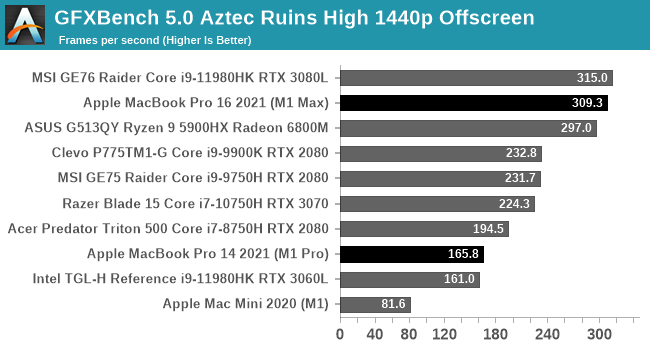iphones are immensly popular, macs not so.
iPhones, like Macs, don't have the marketshare lead of Android. Apple isn't interested in selling <$299 phones to the mass market, which inevitably makes up the vast majority of the market.
Where the iPhone is dominating are the enthusiast, premium, and flagship markets. As such, if you broke down revenue or profit share of smartphones by manufacturer, Apple dominates everyone else.
People dismissing what Apple is doing, im not one of them atleast,
...OK...
i think its very impressive what they achieve in synthetic benchmarks and special use cases (video encoding/decoding, streaming etc etc).
I suggest you look at the benchmark numbers again for M1 and M1 Pro/Max.
The "special use" cases you refer to are encoding/decoding, editing, compiling, rendering, simulations... You know, the kind of stuff that people who rely on their computer to earn an income do.
The reality is that Apple Silicon is changing the paradigm: It dominates in the vast majority of casual use and productivity tasks, and really only struggles with games (which are clearly just bad ports or run in x86 emulation). Gaming is becoming the "special use" case where PCs retain an advantage.
But as per this topic (Apple pc taking over Windows pc's), i just dont think its all that impressive in a different light, you pay 3, what, 4 times more to equal a windows laptop performance? Probably 5 times.
The M1 MacBook Air pretty much decimated the important $900-1100 price range. The performance per watt, display and build quality, and battery life was unrivalled in that class. Unless you absolutely required Windows, there was basically no point in purchasing a Windows laptop.
And then your matching 3080m laptop performance in benchmarks. In real world use, why would the average joe/windows user opt for a Mac pro/max other than less power draw?
Windows laptops with a 3080M aren't exactly chump change.
A 14" MacBook Pro with a top-bin M1 Max (and requisite 32GB of RAM) is $3300. You're also getting a laptop with arguably one of the best displays (mini-LED) and sound systems in the industry. Not to mention battery life (17 hours video playback, 11 hours web surfing), 7.4GB/s SSD, and TB4 I/O.
I'm not sure where you're finding competing devices with a 3080M for $660, $825, or even $1100 as you suggested.


